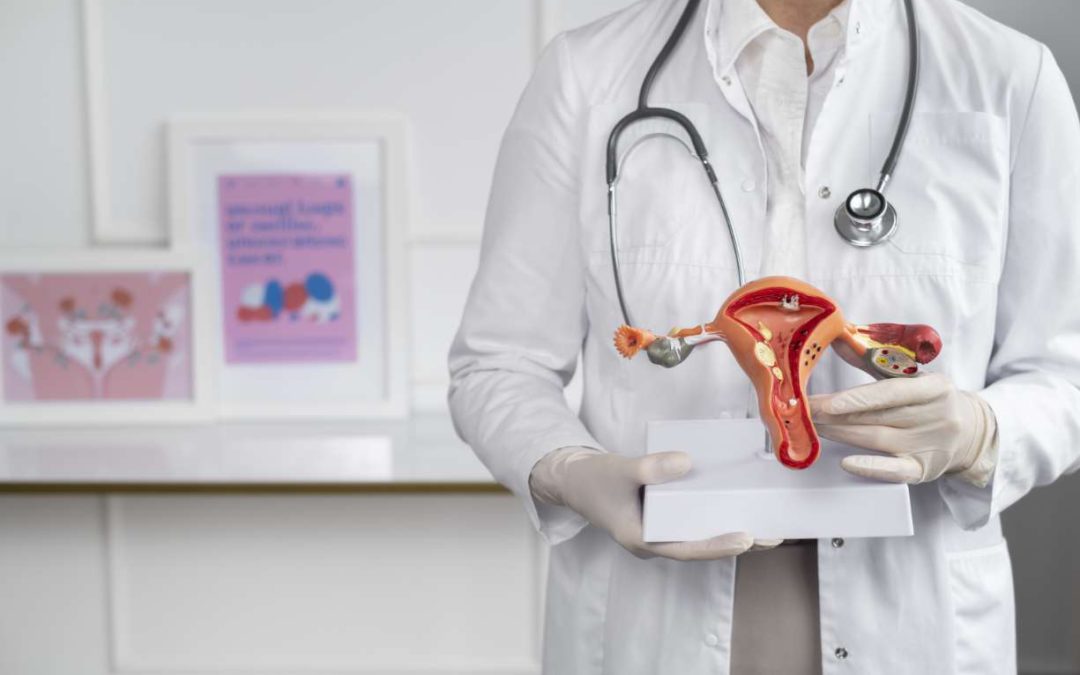Contents
Over six million women in the USA live with the chronic, complex diagnosis condition endometriosis. Yet this life-changing condition attracts little attention. Your interest in the article is likely sparked by the need to UNDERSTAND the cause of symptoms associated with menstruation, bleeding, or ‘spotting between periods. Perhaps you are seeking possible reasons for chronic (long-term) lower back or pelvic pain. You may investigate on behalf of a family member or friend. In either case and whatever the cause, seek medical advice from your health care provider (HCP).
What is endometriosis?
Endometriosis is the condition that results when tissue that lines the inside of the uterus (womb) grows elsewhere in the body. These growths (lesions) may develop on any part of the body. Most commonly, they occur in or around the reproductive system.
What are the symptoms?
The most common and obvious symptom of endometriosis is pain. The pain may not be localized, i.e., specific to any one part of the body. They may be related to natural bodily functions.
- Menstruation may be heavy or accompanied by painful, even debilitating, cramps
- Spotting between menstrual periods
- ‘Deep’ pain during or after sex
- Bowel movements and urination are painful during menstruation
- Pain in the intestine or lower abdomen
Though less immediate, infertility or difficulty in becoming pregnant are symptoms of endometriosis. Up to 50% of infertility cases in the US are caused by endometriosis.
How common is endometriosis?
Just over one in ten women in the USA (15-44) are affected by endometriosis (6.5 million women). The condition is most commonly identified in women in their thirties and forties. Still, in rare cases, it can affect women before the start of their first period.
Worldwide, endometriosis affects about 200 million women. The condition affects all racial, ethnic, and socioeconomic groups.
What are the causes and risk factors?
Despite continuous research, no single cause of the disease has been identified. It is, however, certain that endometriosis is not infectious or contagious. The condition is not airborne, nor can it be passed from person to person by contact.
The most likely cause of endometriosis is that the tissues (endometrium) that line the inner walls of the uterus migrate to other parts of the body. The endometrium, typically flushed out regularly in the menstrual blood, may ‘leak’ and grow in other body parts. These patches of tissue growth (lesions) may develop anywhere in the body but are generally found in the pelvic area:
- On or under the ovaries
- On the fallopian tubes
- Behind the uterus
- On the bladder or bowels
where they may cause pain and interfere with the organ’s function.
Endometriosis is more likely to occur (a more significant risk) in women who:-
- Have a close relative, e.g., mother or sister, with endometriosis
- Had periods before age eleven
- Have short menstrual cycles (27 days or less)
- Experience heavy menstruation which lasts more than seven days
Can endometriosis be prevented? Is there a cure?
The short answer is NO to both questions. But you can reduce the risk of developing it by taking these steps to reduce the estrogen levels in your body.
- If you are using hormonal birth control, discuss with your doctor the options for products with lower doses of estrogen
- Regular exercise (at least four hours a week) will help to reduce the estrogen circulating in your body
- Avoid or reduce your consumption of alcohol and caffeine. Both can raise estrogen levels.
Although the is no cure, there are treatments for the symptoms, and discuss these with your doctor or HCP. The treatment recommended will vary according to individual circumstances. These include your age, whether or not you are trying to get pregnant, and whether the endometriosis is localized or more widespread. Usually, symptoms are alleviated by hormonal treatment or over-the-counter medicines such as ibuprofen for mild symptoms.
You may be recommended surgery if hormone treatment alone does not provide relief. The surgeon will locate and remove patches of endometriosis. After surgery, hormone treatment may be restarted to lessen the risk of recurrence.
Will health insurance cover the cost?
Endometriosis is a chronic (long-lasting) disease that can be difficult and time-consuming to diagnose and treat, especially if surgery is necessary. That all spells expense, unplanned expense. Health insurance plans help you spread and share the cost of healthcare. Federal and state subsidies make them more affordable,l
Thanks to the Affordable Care Act (aka Obamacare), you cannot be refused health insurance, nor can women be charged more than men. Most important, you cannot be denied insurance because you have a pre-existing condition (such as endometriosis )
Faced with the possibility of a chronic condition, check to make sure your plan still meets your needs. Not all HCPs are experts in diagnosing or treating endometriosis. They may refer you to specialists. It would be best to ensure the specists you might need to see are within your plan’s network. It would help to consider whether your plan type (bronze, silver, or gold) suits your changed circumstances.
You cannot change your current plan until Open Enrollment unless some other event, such as a job change or a house move, provides the opportunity for a Special Enrollment period.
Your priority is to meet with your doctor or healthcare provider to establish a plan for your diagnosis and treatment. It would help you plan to talk to a qualified and experienced health insurance advisor about the health insurance plans and the insurance providers best suited to your expected needs.
Image by Freepik
